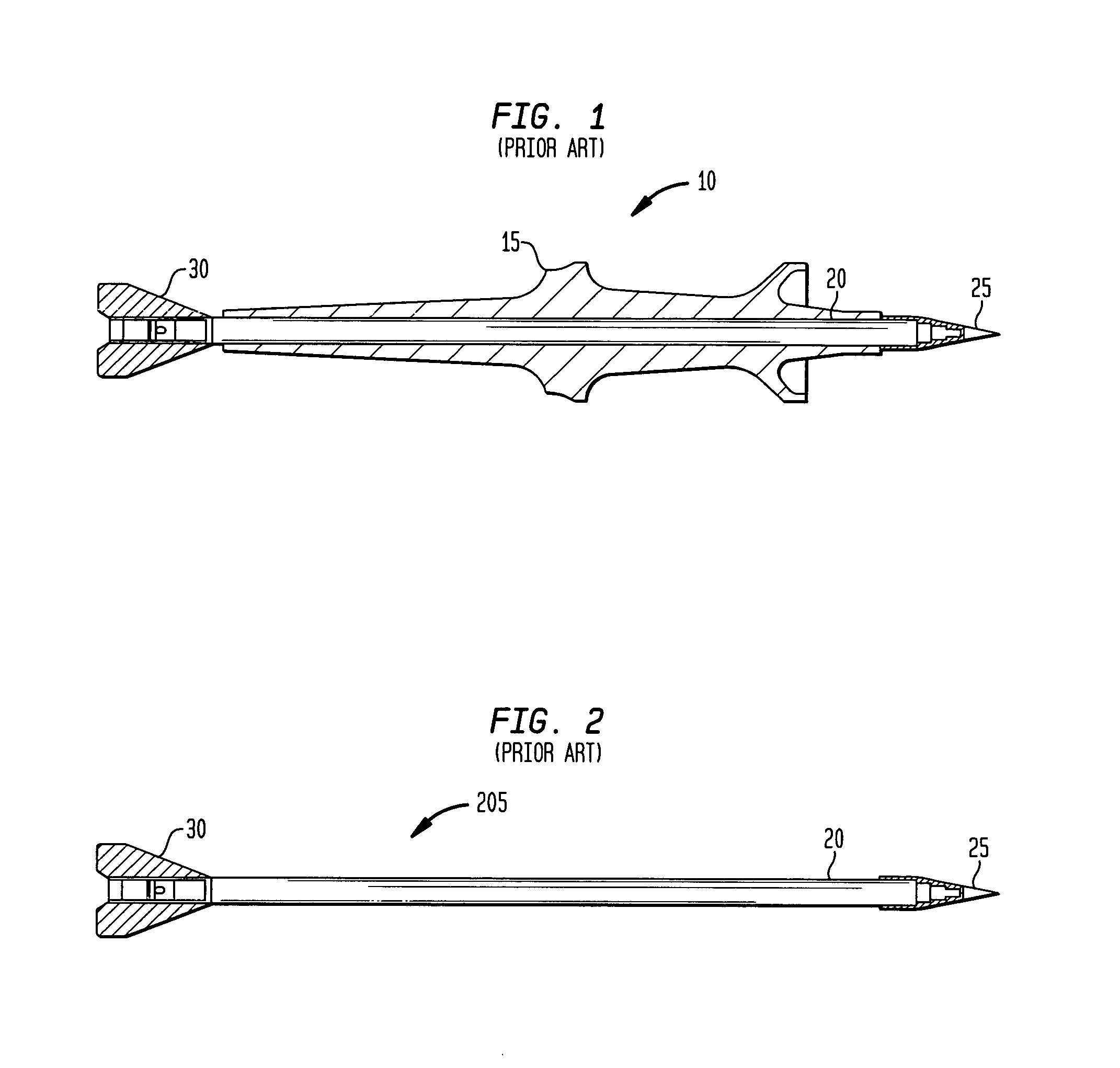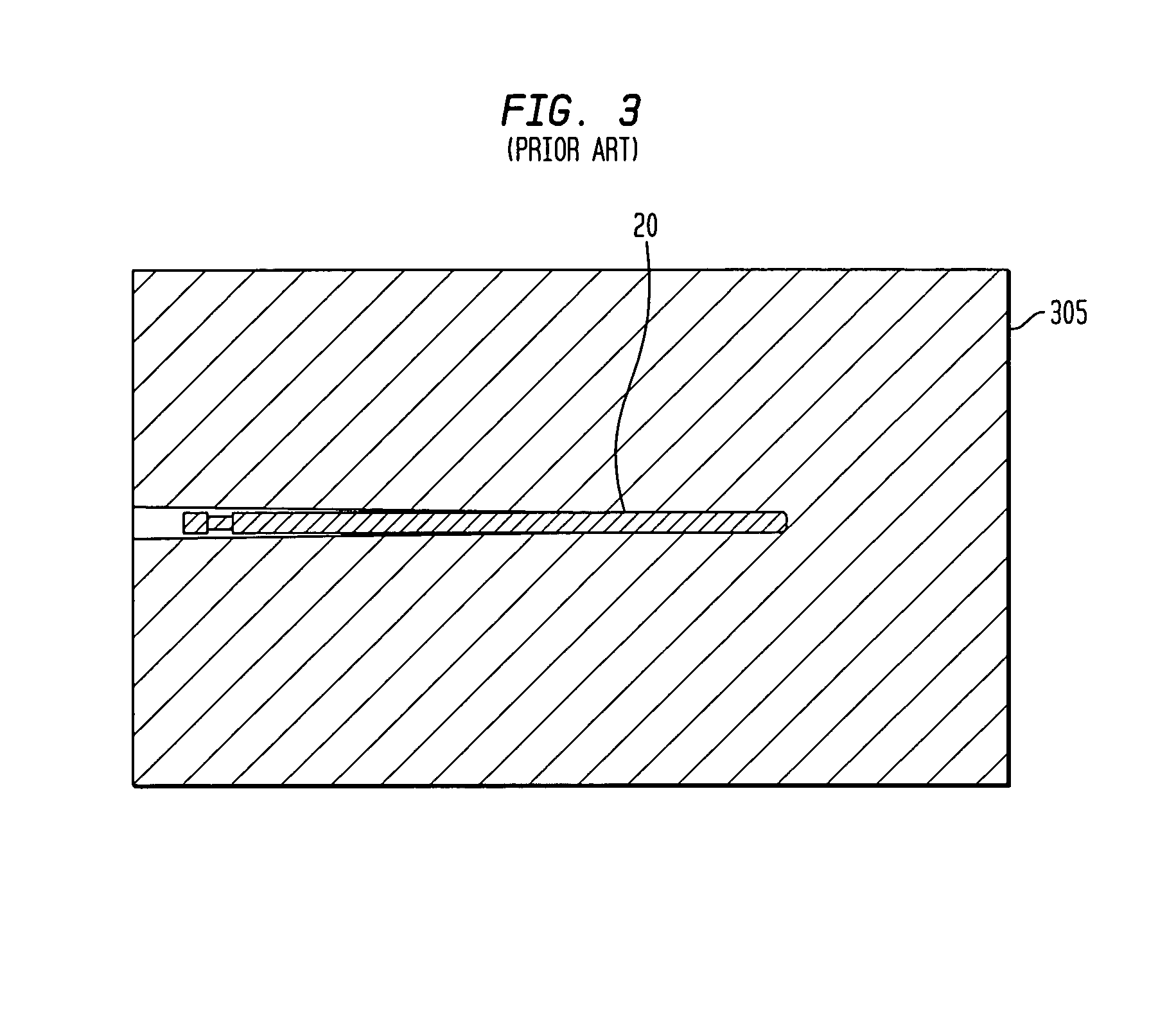Sleeve for structurally supporting a penetrator of a kinetic energy projectile
a technology of kinetic energy and penetrator rod, which is applied in the field of sleeves for supporting kinetic energy (ke) penetrator rods, can solve the problems of reducing the velocity achievable by ke projectiles, rods made of du and tungsten may create environmental problems, and rods made of du and tungsten are extremely heavy, so as to achieve better target defeat capabilities
- Summary
- Abstract
- Description
- Claims
- Application Information
AI Technical Summary
Benefits of technology
Problems solved by technology
Method used
Image
Examples
Embodiment Construction
[0041]FIG. 1 is a cut-away profile view of a conventional kinetic energy tactical projectile 10 using a standard sabot 15. The kinetic energy tactical projectile 10 is comprised of a sabot 15, a projectile rod 20, a nose 25, and a fin 30 (known as the in-bore projectile).
[0042]FIG. 2 is a cut-away profile view of a conventional in-flight projectile 205 after the sabot 15 has been discarded, illustrating the prior art design of the rod 20. The rod 20 is the only component of the kinetic energy tactical projectile 10 that does the work of penetrating the target; consequently, the fin 30, the nose 25, and the sabot 15 are parasitic weight.
[0043]FIG. 3 illustrates the conventional in-flight projectile 205 penetrating an armored target 305. After impacting the armor of the armored target 305, the rod 20 penetrates the armored target 305 due to its velocity. Factors that determine the depth of penetration of the armored target 305 by the rod 20 comprise characteristics of the rod 20, impa...
PUM
 Login to View More
Login to View More Abstract
Description
Claims
Application Information
 Login to View More
Login to View More - R&D
- Intellectual Property
- Life Sciences
- Materials
- Tech Scout
- Unparalleled Data Quality
- Higher Quality Content
- 60% Fewer Hallucinations
Browse by: Latest US Patents, China's latest patents, Technical Efficacy Thesaurus, Application Domain, Technology Topic, Popular Technical Reports.
© 2025 PatSnap. All rights reserved.Legal|Privacy policy|Modern Slavery Act Transparency Statement|Sitemap|About US| Contact US: help@patsnap.com



